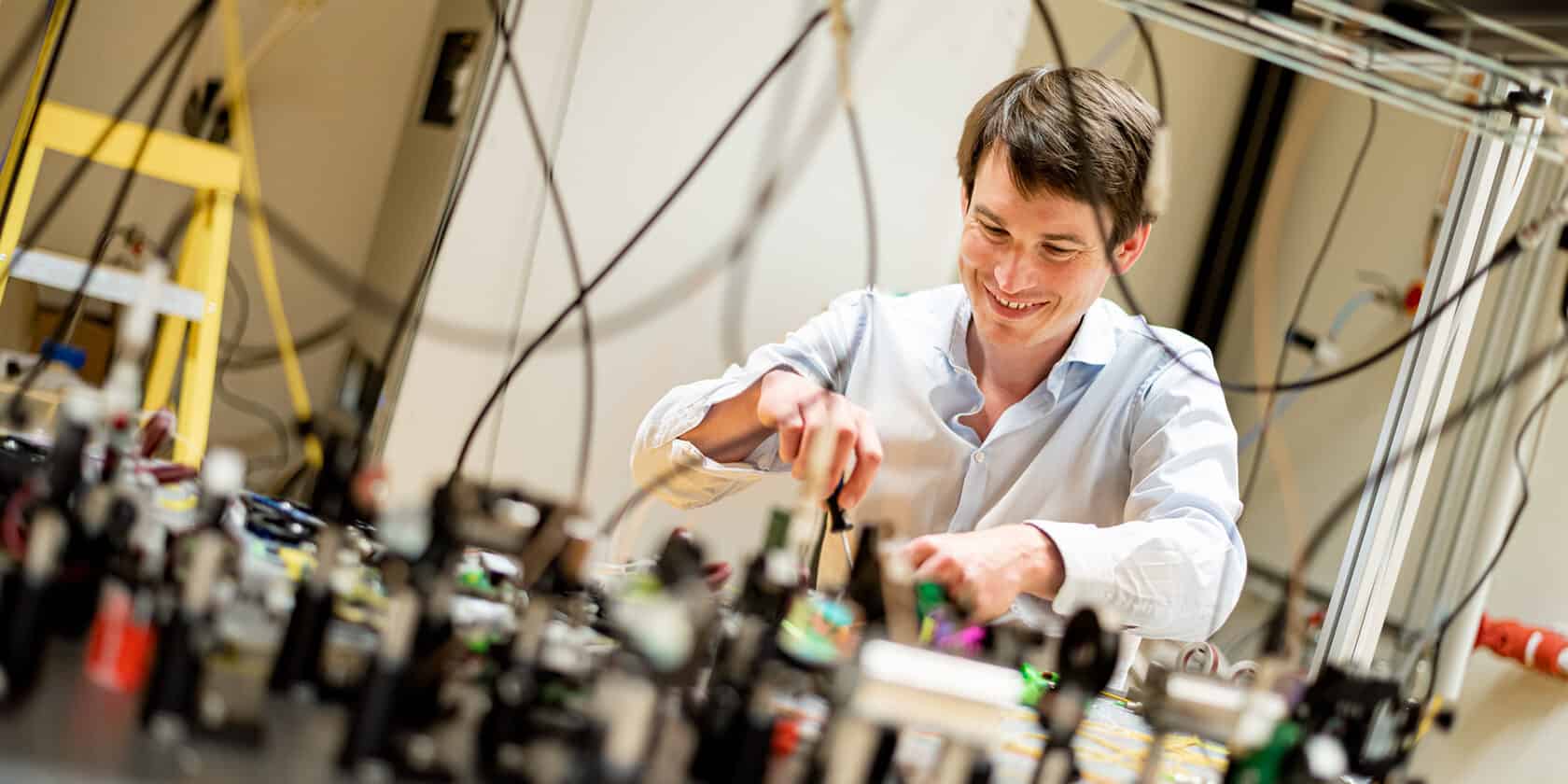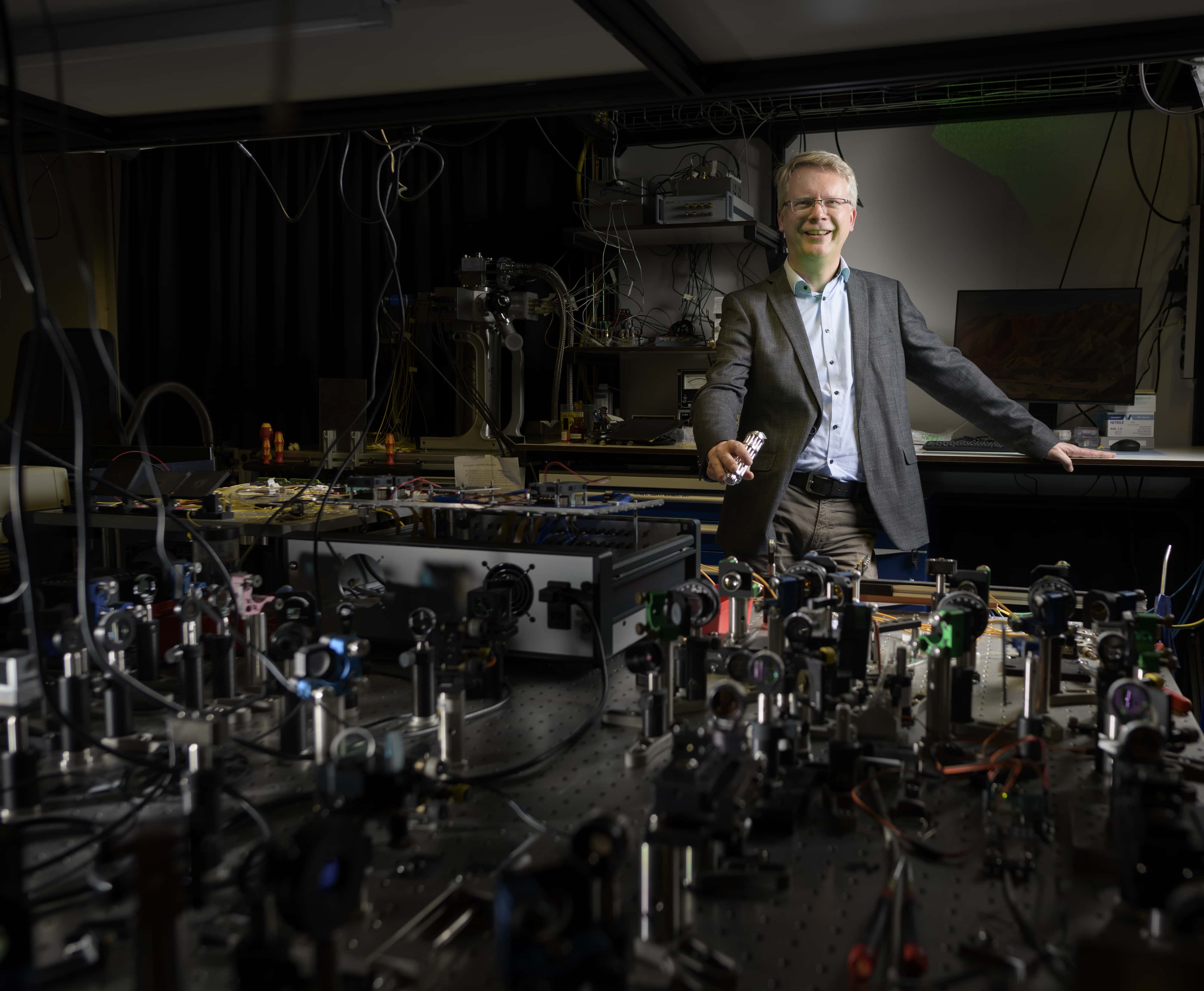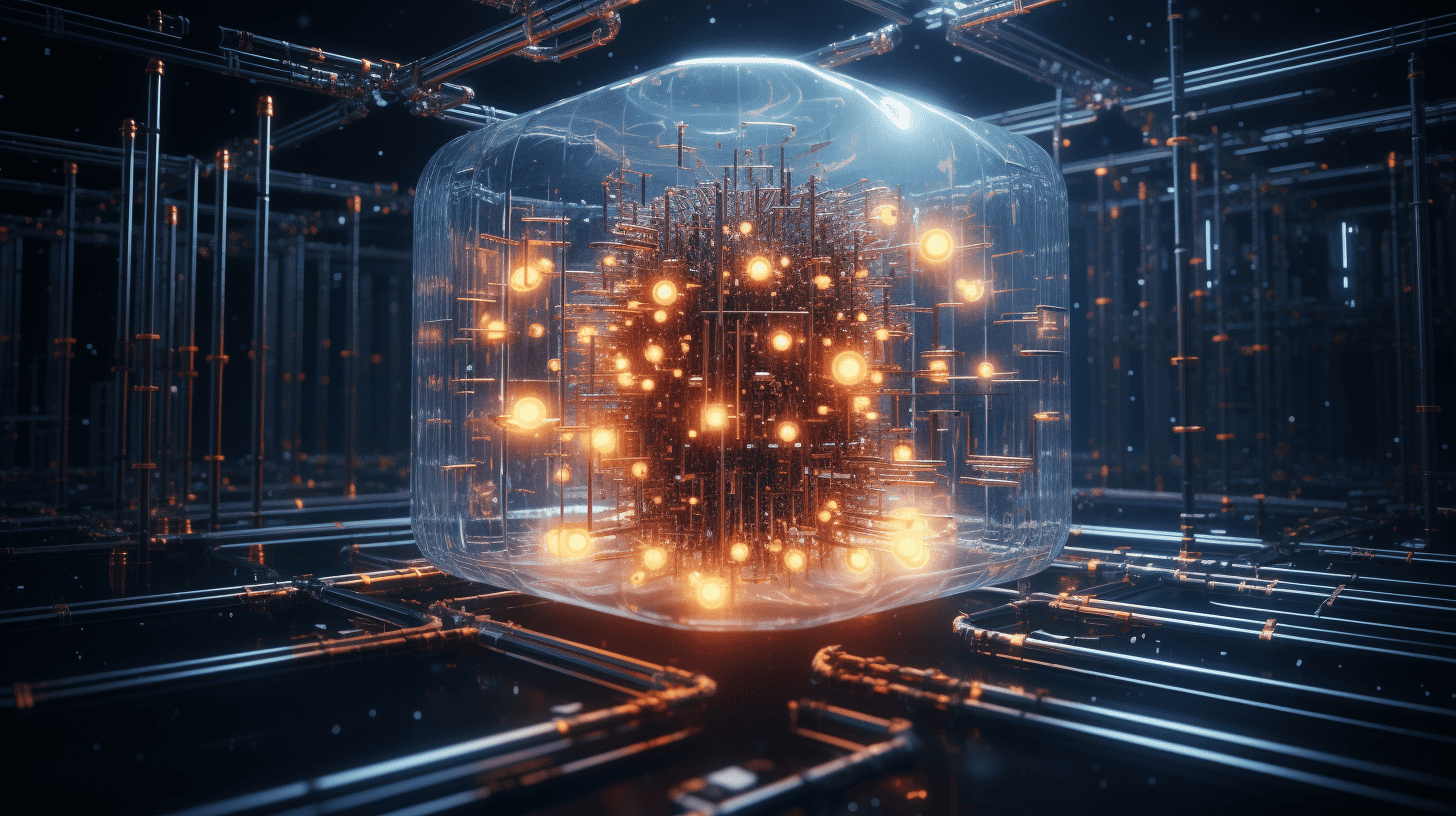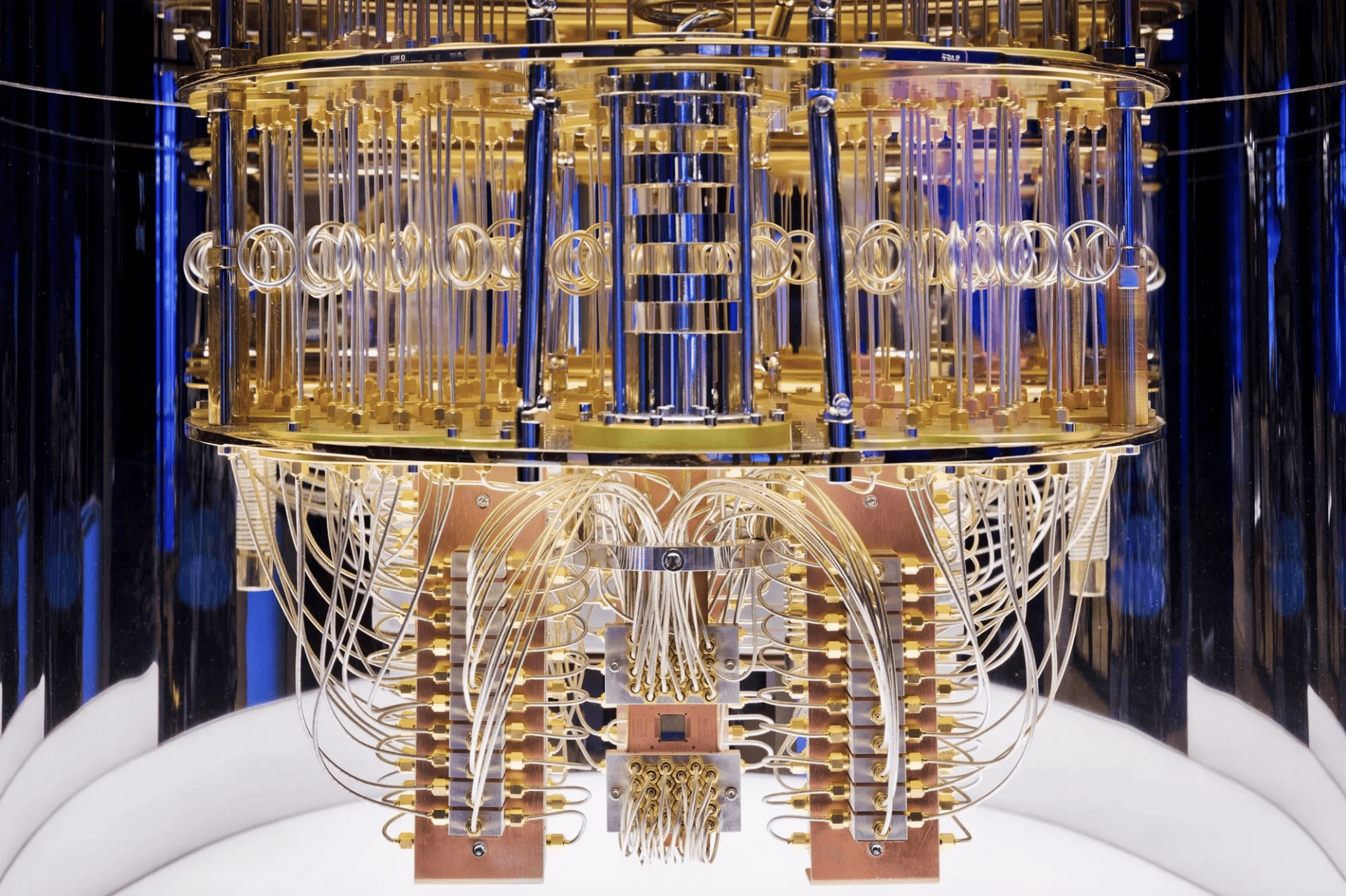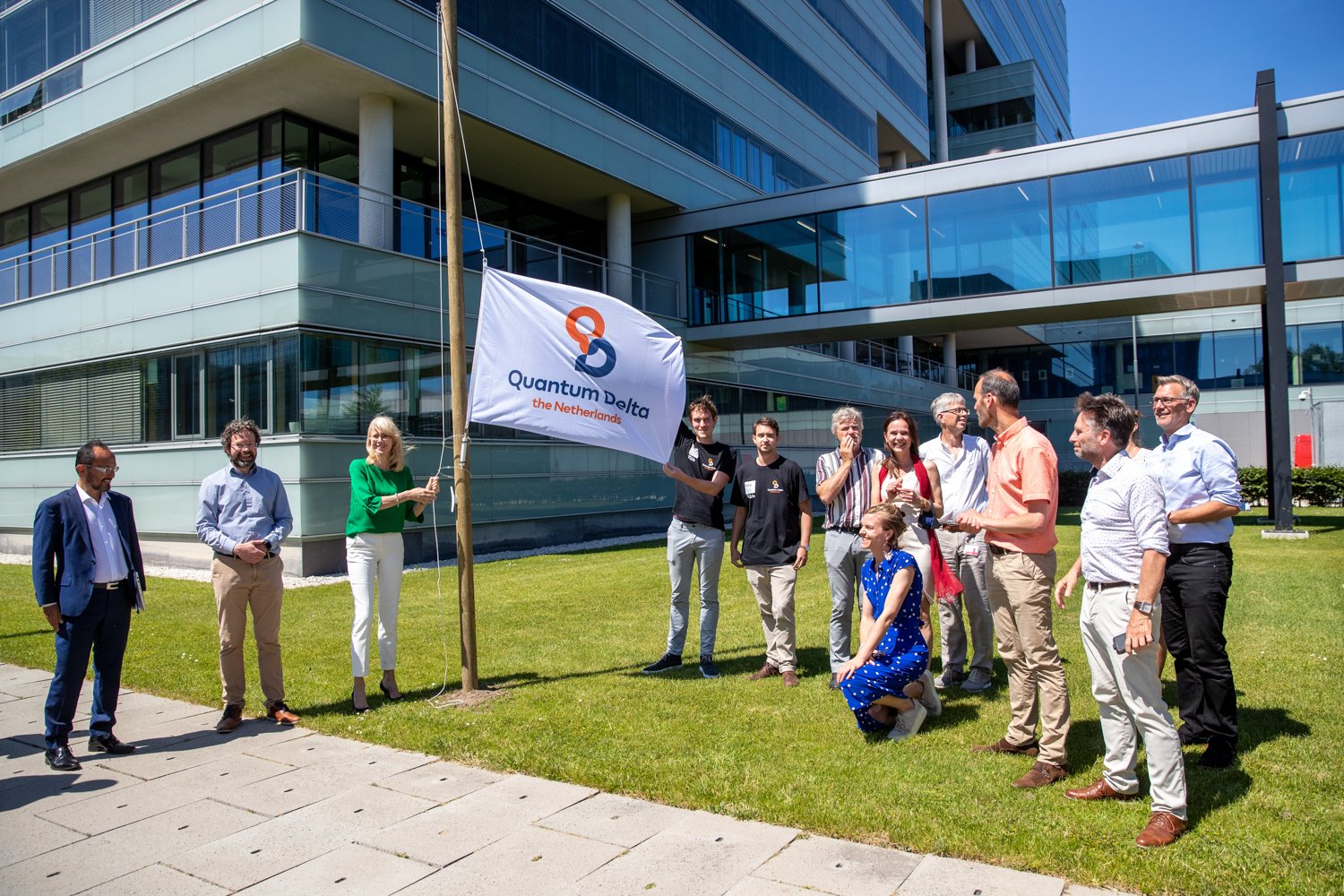
Quantum technology is a so-called key technology that can be used, for example, to make new drugs and materials. New products and applications that we do not yet know about. Explaining how quantum technology works is no easy task. “You have to be able to see it to imagine how it works,” says physicist Servaas Kokkelmans.
Kokkelmans is also director of the Center for Quantum Materials and Technology Eindhoven (QT/e). His research group, CQT – Coherence and Quantum Technolgy – is set to move underground in 2023. A new building will rise between two buildings on the university site, Cascade and Flux, underneath which space will be made for laboratories for experiments with quantum technology. This week, outgoing Secretary of State Mona Keijzer of the Dutch Ministry of Economic Affairs paid QT/e projects a visit. By hoisting a flag, she opened the construction for the new building.
Logging into a quantum computer
The new laboratories are intended for continued research and more experiments, but also to show others besides the scientists who are currently mainly researching it what quantum technology makes possible. Kokkelmans: “There will also be an exhibition area, among other things. Where we can welcome students, companies and other interested parties. For example, you can log in to our quantum computer and our quantum internet. This way, you can experience for yourself what it is like to work with it. We also plan to organize tours of the laboratories.”
Kokkelman’s QT/e forms part of the Quantum Delta NL Program. That program is receiving 615 million euros from the Dutch National Growth Fund. Through this fund, the government will invest 20 billion euros over the next 5 years in projects that ensure economic growth. It is an initiative of the Dutch Ministries of Economic Affairs and Finance. Ministers, state secretaries and civil servants have examined how the Dutch will earn their money in 2040, State Secretary Keijzer explains.
Physics set-up
During her visit she was treated to, among other things, a small demonstration of the work on the so-called KAT-1 demonstrator, on which PhD student Ivo Knottnerus is working. He works partly for the university in Amsterdam and partly for the Eindhoven University of Technology (TU/e). ” There is already a similar type of machine in Amsterdam. I am transferring the knowledge from Amsterdam to here in order to build a second generation machine.” The KAT-1 demonstrator is a major project line in the growth fund proposal that Quantum Delta NL submitted. “What the Secretary of State got to see forms part of that,” he adds.

Knottnerus is collaborating on a hybrid quantum computer. “That’s a quantum computer, actually a large physics setup, with a classical computer acting as a translator between user and experiment. The normal computer optimizes parameters such as laser intensity that’s used during the running of the quantum computer, but also stores any results, for example.”
The KAT-1 demonstrator comprises a setup that shows how individual atoms are captured. “What our qubits are.” A classical computer uses bits, which have a value of 1 or 0. This kind of qubit can have any value between 1 and 0. As such, a quantum computer is able to perform certain calculations much faster than ordinary computers. For one thing, an ordinary computer can decipher large series of numbers, algorithms, one by one. Whereas a quantum computer can include all the results in the calculation at the same time. “This makes it possible to quickly calculate properties of materials and medicines, for instance,” Knottnerus explains.
Fluctuations
Capturing those atoms can only be done under certain conditions. “That’s why those atoms are in a vacuum chamber, well-shielded from the world. With a small fluctuation in temperature or humidity, the lasers, mirrors and magnetic fields we use to capture the atoms change. Then you can’t capture the atoms and you are correcting everything all day long, which is impractical. So the temperature and humidity have to be extremely stable.” That new laboratories are coming is practically a necessity. And it is ideal to be able to control all the conditions.”
The Secretary of State also got to meet a number of companies and governmental bodies that are already working with the QT/e. Like the municipality of Waalre, Smart Photonics and the Automotive Campus Helmond. A self-driving car is also being tested on this campus. Kokkelmans: “Those autonomous cars are connected to the 5G network. This is not done via the cloud, but via edge computing. There are small computers all over the network that need to be able to communicate very quickly with the autonomous cars. The more of those kinds of connections you have, the harder it is. We want to connect those 5G antennas quantum-protected to the network.”

Jobs
With the allocated funding, Quantum Delta NL aims to position itself as “a leading international center and hub for quantum technology,” according to the press release. Over the next seven years, the partnership intends to develop into a leading European knowledge cluster. With a contribution to the gross domestic product (GDP) of 5 to 7 billion euros and 30,000 high-quality Dutch jobs in the long term.
There are five hubs for this in the Netherlands: Delft, Amsterdam, Leiden, Twente and Eindhoven. The visit by the Secretary of State was a special occasion for Freeke Heijman, director of Quantum Delta NL: “We have been working for a few years on the proposal to qualify for the growth fund. Everything up to this point had been either virtual or on paper. With the visit of a member of the cabinet, it basically amounts to a national launch of our project.”
technology
Quantum technology is an incomprehensible technology to most people, including the Secretary of State “as a simple lawyer and business expert.” According to Heijman, it’s not a big deal that people don’t understand the technology. “People also don’t know how a computer works and what it looks like inside. It’s more about what you can do with it. The Growth Fund has been set up to invest in the foundations of new technology. It’s about the future, 2040.”
Looking back, there are other technologies that were once at the stage where quantum technology is now, Heijman says. Like the Internet in the 1980s or transistors in the 1960s. “Those changed society about 30 years ago. You see that happening now too. At the moment, it’s still abstract, yet soon it will be possible to do calculations that are currently so out of reach. Then completely new applications will emerge for, say, materials, medicine, energy storage and transport, security.”
Long way to go
Until recently, quantum technology was chiefly a scientific field, Heijman goes on to say. Experiments and research tended to be carried out at universities. “Now you see that, because it’s more and more about the actual development and use of the technology, even vocational and higher education are getting involved. We are also going to use the investment from the growth fund to set up learning and talent centers. Vocational (MBO ) and university of applied sciences (HBO) students, as well as the business community, can all get together there in a kind of experimental lab to work with the technology so that it breaks out of the purely academic world.”
“In essence, it’s about the people involved. About the talent, the students and the collaboration between all those people who you build an ecosystem with. Where innovation flows from. One of our goals is not only to help existing companies and industry, but also to generate new start-ups. Our ambition is 100 start-ups by 2027.”
The quantum computing platform in Eindhoven is, according to Kokkelmans, “truly complementary to other parts in the Netherlands. “Our platform is based on cold atoms and that is unique if you compare it with Delft, for example. So a lot is possible with our hybrid algorithms. When integrated with the right hardware, you can turn it into a very efficient quantum computer. I think this is the most successful direction at the moment because the road to a universal quantum computer with error correction still has a long way to go.”



